#vesta devotee
Explore tagged Tumblr posts
Text
Autumn Equinox Rituals Honoring Hestia
Create a seasonal protection spray and ward your home, or just use the ingredients as a spell jar:
🍁 Ingredients: rose petals, dried apple slices, pink salt, cinnamon, sage, bay leaf, cloves. (optional for spell jar: crystals: black tourmaline, amethyst. seal with black wax or cord.)
🍁 if doing a spell jar: write a protection charm/prayer on a piece of paper and put it inside. If making a spray, say it out loud while warding. For example: "Blessed Keeper of the Hearth, protect all who dwell here whether they be near or far away, safe they will be with the ingredients of this spray."
🍁 add the sigils of Hestia-Vesta.
Create a simmer pot to cleanse your house:
🍎 Ingredients: apple slices, cinnamon sticks, bay leaves, cloves, nutmeg, cardamom, orange/blood orange slices, star anise, vanilla extract (optional), pumpkin pie spice (optional)
🍎 Add all ingredients to a pot on a stove with enough water (around 6 cups depending on the size of your pot)
🍎 Cast a cleansing spell/prayer as it boils and you start to smell the aroma. Let the rising vapor be an offering to Hestia and ask Her to help you cleanse your home with it. Reduce heat to a simmer and add more water to replace the water that has evaporated for as long as you want. Remember to practice kitchen safety!!
Some foods you can make and charm with intentions:
Cinnamon oat bread - for success, abundance, prosperity, and wealth (this is my favorite recipe - just add cinnamon when combining all ingredients)
Pomegranate glazed salmon - for abundance, fertility, rebirth, honors Persephone's return to the Underworld, and invokes Hestia Polyolbos
Mashed sweet potatoes or butternut squash - for protection, harmony, friendship
Pumpkin ricotta pasta - for wealth, prosperity, love, fertility
Apple cider - for health and healing
Eat anything that's in season and feel the energy of the Earth (warmed and heated by Hestia at its molten core) warm your soul. Thank Her for these gifts.
Please feel free to add and share any more ideas you have!
#hestia worship#hestia devotion#kitchen witch#mabon#autumn equinox#hestia devotee#witchcraft#hellenic pagan#hearth witch#witchblr#witches#magick#hellenic witchcraft#witchcraft ritual#witch ritual#wheel of the year#hellenic paganism#hestia deity#vesta devotee#vesta goddess#vesta worship#mabon ritual
186 notes
·
View notes
Text
VESTA IN LIBRA: October 27 - Jan 7
The Asteroid Vesta in Astrology represents The Goddess Vesta (counterpart of the Greek Goddess Hestia). Vesta is the Goddess of the Sacred Flame; representing Purity, Devotion, Service, and Sacrifice. In modern astrology, the Asteroid of Vesta can represent a place of devotion and dedication in the chart - it is where we are tending an inner Sacred Fire.
Fire needs tending, care, and mindfulness so that it doesn't burn out; or burn too hot and get out of control. We give offerings of fuel (service, time, energy) in order to keep the fire lit. We must practice care and dedication, paying close attention to this fire so it does not go out.
The transits of Vesta can show us an area of life which we are feeling called to direct more care, devotion, and service. The sign that Vesta is transiting through represents the archetype or energy that is asking for more dedication, focus, and devotion.
Vesta also embodies the archetype of service and self-sacrifice. It suggests a willingness to dedicate oneself to the service of others or to a higher calling, even at personal cost. We can look to the transit of Vesta to receive guidance as to what aspects of life we should direct some extra dedication, devotion, and service to.
Think of the Asteroid Vesta as a Sacred Fire that helps us connect with something Sacred in each sign that it visits. When we discover something sacred, we recognize that we have a responsibility to protect, preserve, and serve that sacred thing.
When the asteroid Vesta is in the sign of Libra, whether in a natal chart or during a transit, it merges Vesta's themes of devotion, focus, and service with Libra’s qualities of harmony, balance, relationships, and beauty. The archetype of Libra embodies the energy of balance, harmony, and relationships, focusing on the pursuit of fairness, justice, and aesthetic beauty.
Governed by Venus, Libra is deeply concerned with creating equilibrium in all areas of life, from personal relationships to social interactions and decision-making processes. This sign values diplomacy, cooperation, and the art of compromise, striving to foster peace and understanding between individuals. Libra’s lessons center around finding middle ground, cultivating mutual respect, and recognizing the importance of both giving and receiving in partnerships.
Additionally, Libra teaches the appreciation of beauty, grace, and refinement, encouraging a life enriched by art, culture, and meaningful connections.
Here are some associations of Vesta in Libra:
Vesta in Libra: October 27, 2024 through January 2, 2025
• Focus on Relationships: When Vesta transits through Libra, relationships and partnerships come into sharper focus. People may feel a heightened desire to invest time and energy into strengthening their connections with others, particularly through creating harmony, balance, and mutual respect.
• Harmonizing Energy: This transit often brings an opportunity to bring balance to areas of life that may have become out of alignment. People may feel motivated to create more equilibrium in their relationships, work-life balance, or personal routines. It’s a good time to focus on restoring peace and calm in relationships.
• Commitment to Fairness: Vesta’s transit through Libra can inspire a deeper commitment to ideals of fairness and equality. Individuals may be drawn to work for causes that promote justice, human rights, or equality. Diplomatic efforts are favored during this transit, as there’s a strong focus on resolving conflicts through cooperation and compromise.
• Artistic Devotion: This transit can also highlight a deep appreciation for beauty, art, and design. People may feel called to devote time and energy to creative projects or to beautifying their surroundings. Artistic expression, especially those related to balance and harmony, can be particularly fulfilling.
• Challenges in Balance: The need to balance devotion to others with self-care is especially important during this transit. People may feel pulled in multiple directions, trying to meet the needs of others while also maintaining their own well-being. Learning how to find balance in relationships, work, and personal life is a key theme during this time.
Overall, Vesta in Libra emphasizes devotion to relationships, fairness, and beauty. It encourages individuals to seek balance in their personal and interpersonal lives, with a focus on harmonious connections and creative expression. Both in natal charts and during transits, the lessons of Vesta in Libra revolve around finding equilibrium between serving others and maintaining personal well-being.
Additional Insights:
Look to your birth chart to see what HOUSE is ruled by Libra. This house can give you additional clues to the area of life that Vesta is encouraging more devotion to right now.
If you have Vesta in Libra in your Birth Chart, you are having a Vesta Return! These themes come naturally to you and are likely a focus through your whole life. Let me know in comments if you have Vesta in Libra and how you feel about the above description of this placement. If you don't know where Vesta is in your birth chart, contact me to schedule an Astrology Session and I can help you find Vesta as well as interpret other parts of your chart.
VESTA is joining the Asteroid HESTIA in Libra for a brief period. Hestia has strong similarities to Vesta - so we have already been feeling some of this in our lives thanks to Hestia in Libra. These feelings are amplified with both Hestia and Vesta in the same sign - although Hestia will be moving into the sign of Scorpio on November 21. You can review this post about Hestia in Libra here:
https://www.patreon.com/posts/hestia-in-libra-111430324
#astrology#astrologer#astro blog#astrology blog#astrologyupdate#astrology transits#libra#witchblr#asteroid#asteroids#goddess asteroid#asteroid vesta#vesta#Hestia#hestia devotee#hestia goddess#hellenic deities#hellenism#astrologyalert
9 notes
·
View notes
Text
I baked some chocolate muffins today and I could hear Vesta cheering me on the entire time *o* ☺️
I love her sm ❤️🔥
30 notes
·
View notes
Text
I love these pics of Hestia- I mean Vesta
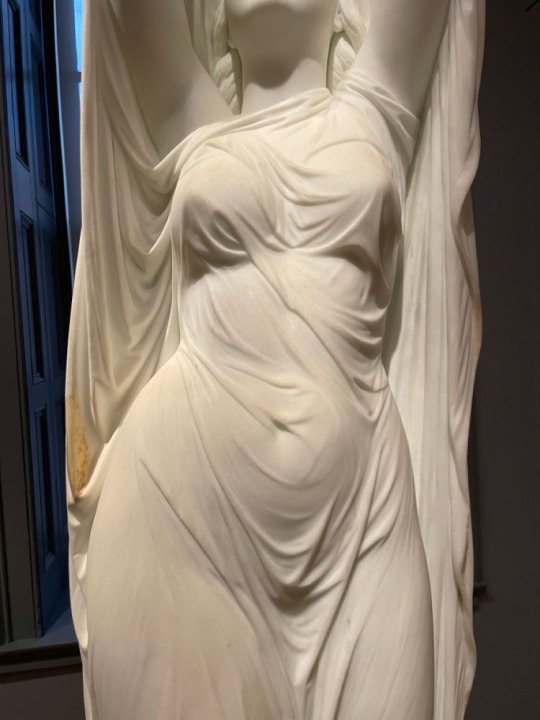

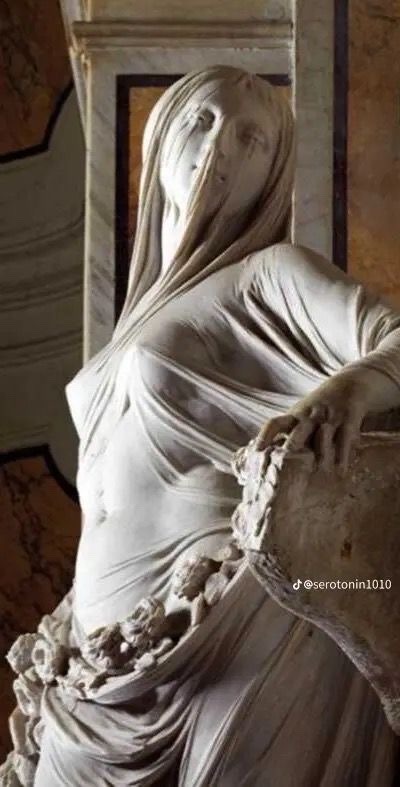
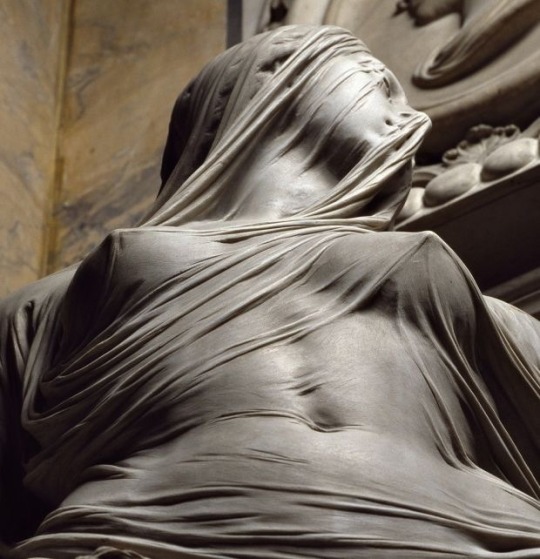
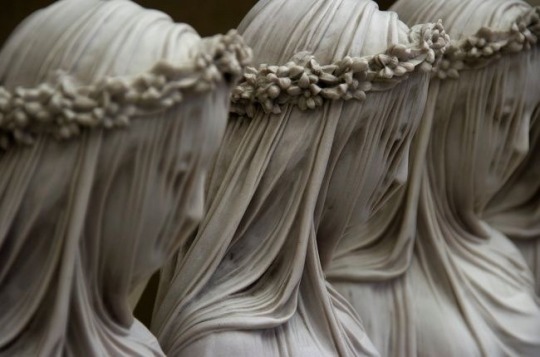
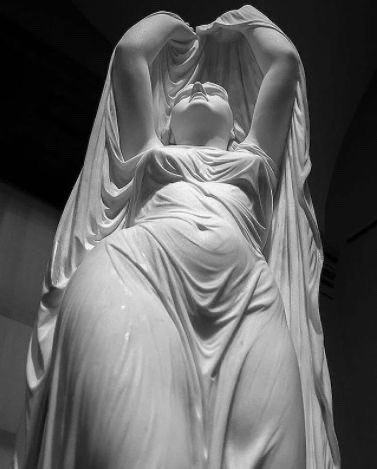
#vesta 🪔#aesthetics :: 🎨#devotion :: 📿#roman pagan#pagan community#pagan#paganblr#paganism#pagans of tumblr#spiritual#spirituality#polytheism#religion#deity devotion#deity worship#sculpture#hestia deity#hestia devotee#hestia worship
14K notes
·
View notes
Text
It’s funny how in hindsight you’ll see signs from a god that you never noticed. Like when I was a kid I used to love this book series literally called “Pegasus” A lot of the plot isn’t super important, it’s pretty classic YA wish fulfillment stuff, but what WAS notable is that I remembered the other day that it was revealed later in the story that she was a “daughter of vesta” (yes I know it’s wildly myth inaccurate but I didn’t care, I was 8). Anyways I later grew up to become a devotee of Lady Hestia
Funny how little things like that slip by you huh
#did anyone else read this?#looking back it was basically Greek mythology fanfic#but I really liked it lol#hellenic polytheism#hellenism#hellenic deities#hellenic pagan#hellenic paganism#hellenic gods#witchcraft#hellenic worship#helpol#hestia worship#hestia greek mythology#hestia greek goddess#i love hestia
21 notes
·
View notes
Text




The Triumph Of Christianity Over Paganism (Gustave Doré) Talon Abraxas
The Christ The adorable God Kristos (Christ) comes from archaic cults of the fire God. The letters P (pyre) and X (cross) are the hieroglyph which represent the generation of the sacred fire.
Christ was worshipped in the mysteries of Mithra, Apollo, Aphrodite, Jupiter, Janus, Vesta, Bacchus, Astarte, Demeter, Quetzalcoatl, etc.
The Christic principle has never been absent from any religion. All religions are one. Religion is as inherent to life as humidity is to water. The great cosmic universal religion becomes modified into thousands of religious forms. Thus, the priests from all religious forms are completely identifiable with one another through the fundamental principles of the great cosmic universal religion.
Therefore, a basic difference between the Mohammedan priest and the Jewish priest, or between the Pagan priest and the legitimate Christian one, does not exist. Religion is one. Religion is unique and absolutely universal. The ceremonies of the Shinto priest of Japan or of the Mongol Lamas are similar to those ceremonies of the shamans and sorcerers from Africa and Oceania.
When a religious form degenerates, it disappears; yet, the universal life creates new religious forms in order to replace it.
Authentic primeval Gnostic Christianity comes from Paganism. Prior to Paganism, the Cosmic Christ was worshipped in all cults. In Egypt, Christ was Osiris and whosoever incarnated him was an Osirified one. In all ages there have been masters who have assimilated the infinite universal Christic principle. In Egypt, Hermes was the Christ. In Mexico, the Christ was Quetzalcoatl. In sacred India, Krishna is Christ. In the Holy Land, the great Gnostic Jesus (who was educated in the land of Egypt) was the one who had the bliss of assimilating the universal Christic principle, and because of this, he was worthy of being rebaptized with the seity of fire and of the cross, Kristos.
The Nazarene, Jesus-Iesus-Zeus, is the modern man who totally incarnates the universal Christic principle. Prior to Jesus, many masters incarnated this Christic principle of fire.
The Rabbi of Galilee is a God, because he totally incarnated the Cosmic Christ. Hermes, Quetzalcoatl, Krishna are Gods because they also incarnated the Cosmic Christ.
It is necessary to worship the Gods; they help their devotees. --Perfect Matrimony, Samael Aun Weor
19 notes
·
View notes
Text
It's always heartwarming to hear someone else feel the same way I do about Vesta / Hestia ❤️🔥
Introduction: my relationship with Hestia 🥮🔥🏺

Collage for Hestia
** hello witches and friends **
My name is Morgan and I’ve been a (semi) practicing witch coming up on 7 years now - which is honestly insane to me.
I first connected with Hestia a few years ago when I was first getting into deity and expanding my practice beyond just the principles of Wicca. I was doing research into deities and I kept being drawn to her name in my research. It was like a chorus: Hestia. Hestia. Hestia. So I decided to look into it, just as a way to make sure I tread every path. The funny thing is, I originally thought Hestia was Hecate and when I saw this veiled figure and orange robes and was just like ????
After that I ended up starting a relationship with my Matron so Hestia was just kind of on the edges of my radar. Eventually though, she came back into my life and my practice. I never had a particularly good home life so working with a deity who is reminiscent of hearth and home has been a very healing experience for me in that way.
Oh Divine Hestia
May our hearths stay lit
Our flames burn burn bright
Our food be filling
And our presence be like returning home
#hestia devotee#hestia goddess#witchblr#witchcraft#hestia#hellenic polytheism#hestia devotion#hestia prayer#paganism#hearth witch#vesta
39 notes
·
View notes
Text
Disclaimer: I would like to start this post by saying that I do not live in Nemi. That means that 1) I cannot provide the same amount of geographical or folkloric detailed knowledge a nemese would and 2) I am not providing any personal information. Secondly, I have used Italian resources only - more specifically, those I've found on the official website of the Comune [= town, Italian] of Nemi, among the many - as there are way more resources in my native language. I will, so, provide both Italian and translated versions of names and the like. Lastly, I want to specify that I have already posted this blog elsewhere: I will not be changing anything if not mistakes I might run into while re-reading it.
This being said, enjoy!

Nemi: the city of Diana
Introduction
I can't really use the same introduction I had used when I had first written this blog. This is for two reasons: first off, I had it written for a weekly challenge on an online community; secondly, my views and beliefs have profoundly changed ever since. When I had typed the first few words, I thought I belonged with the Celtic gods. Now, after a long time of consideration, I know I belong with the Roman ones. I like to think of this post as the first step that led me to choose Roman polytheism.
And now that you know the place that this post holds in my heart, you can also imagine why, of all posts, I have decided to repost this first.

Nemi
The myth of the foundation of Rome is very popular in Lazio, the twins Romulus and Remus being protagonists of said event and their mother being Rea/Rhea Silvia. The latter, is said to have been a priestess and/or devotee of Vesta, and this goddess' cult is said to have been one of the key elements of Nemi: that's the reason why some modern theories suggest that this town is where Rome first originated - perhaps, due to its closeness to the supposed location of Alba Longa, mythical hometown of Rhea Silvia.
Nemi is located in Lazio, a region of central-western Italy, and its territory is part of the Parco Regionale Suburbano dei Castelli Romani [= Regional Suburban Park of Castelli Romani, Italian]. Built over a lake of volcanic origin, this town is the smallest out of all of the ones in the Castelli Romani [= group of cities near Rome, whose history is closely tied to that of the capital]. In the pre-Roman era, the town was supposedly part of Aricia - a nearby Latin city - which, mythologically-talking, was founded by Theseus' son: Hippolytus. It is probably during this period that the temple of Diana Nemorensis was built, leading some historians to believe that Nemi is the place where the cult of this goddesss first started. The sanctuary reached its pitch of popularity with the Romans.
Furthermore, there used to be two ships, either commissioned by Tiberius or Caligula, possibly dedicated to Diana and destined to parties - a footnote is necessary: the most accredited theory suggests that the ships were indeed commissioned by Caligula, but they were dedicated to the Egyptian goddess Isis. Unfortunately, not only did these ships sink and it took two expeditions - one in the 15th century, that failed, and one in the first half of the 20th century, which was successful - to retrieve them, but they also caught fire little after in the museum that used to host them.
The name of the city itself seems to be tied to Diana: Nemi is in fact a derivative of the Latin word "nemus" [= wood, Latin]. Nemi's wood that was sacred to Diana, and it was attributed to her through the title of "nemus Dianae" [= wood of Diana, Latin]. Two more derivatives of the word "nemus", that seem to highlight the deep bond between the goddess and the town, are the epithet contained in "Diana Nemorensis" [= Diana of the wood] and the name of the festival of "Nemoralia" - a celebration that took place on the 15th of August to honour Diana herself.
This being said, the connection between Diana and Nemi is, to say the least, very explicit.
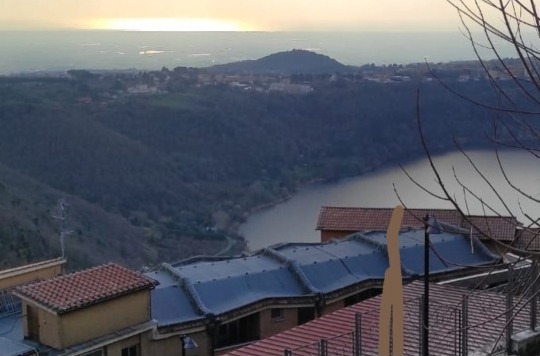
Il bosco - The wood
Contrarily to what the title might state, this paragraph will not be focusing on the wood itself. Rather, it'll focus on what used to happen in the wood. It is said that there was to be a man who used to merge mystery and legend, intertwining history and myths at the same time. I am talking about the figure of the rex nemorensis [= king of the wood]. Its existence finds a direct connection to that of the rex of Rome, whose main role was that of main administrator in the archaic Roman religion, and was later on replaced by the pontifex maximus. It is still unknown whether he is an historically certified figure or if he was - and is - simply a part of the local folklore. There is a legend, however, that explains how the rex nemorensis was "chosen". For this myth/ancient tradition seems to have no correspondences whatsoever in Roman or, more broadly, Greek theology/mythology, I advice reading this paragraph as if it was talking about a story and nothing more: I am unsure of its historical reliability myself, not to talk about the fact that the official cerimony is still unknown to us. I am nonetheless going to add this piece of lore as it is an interesting folk take on the cult of Diana.
In the sacred wood of Diana, it is told that there is a tree, probably an oak, that catches the eye; mistletoe - a plant sacred to Diana - growing all around it. In front of it, there always seemed to be a silhouette of a man, holding a branch in his hand. He's keeping his guard up, scanning the wood ready to battle the enemy that's about to come. He's both a priest and a king: he's the rex nemorensis. The "enemy" who's about to be introduced is a slave who managed to free himself from his status - what one would call, in Latin, a libertus - and whose job is that of taking the life of the current rex nemorensis with a stick of mistletoe. If he's successful, he'll be granted that same position. The new ruler-priest will have the responsibility to grant abundance to the wood, and so he must dedicate himself to its patroness: Diana herself. With this alliance ensured, the new rex nemorensis can now officially take the place of the former until the cycle doesn't repeat again.
This legend is supposed to explain how cycles always start and end, as well as how a ritual worked. The origins of this myth are unknown: since it does not seem to have classical origins - Greek, Roman or Italic, that is - , it could be a product of syncretism of local folklore and mythology. I think it is worth to mention that one of the storytellers had suggested the myth being a descendant of the Celtic culture, as the figure of the rex nemorensis reminded them about the knowledgeable druids. Even though I do think that Indoeuropean ancient religions have a common root, I don't share this view as historically talking there is no evidence of Celts and Romans interacting in Lazio so back in time - and by "back in time" I mean at the very foundation of the Italian capital.

Lo "Specchio di Diana" - The "Mirror of Diana"
The "Specchio di Diana", or Lago di Nemi [= Lake of Nemi, Italian] is a lake of volcanic origin. Unfortunately enough, we do not have many records of legends and/or myths about this lake. Nor do we have, archeologically, much left of what used to be a place of great interest for pagan polytheists due to its connections to Diana. As I had already mentioned in the paragraph about Nemi, two ships were built here under commission - possibly - of Caligula. Later on, it is theorised that they might have been destroyed after the emperor passed away in order to remove every trace of him from the Roman culture.
But why is this place so connected to Diana? As far as we know today, it is mainly because of a legend: it is said that the goddess used to look at her reflection in the crystal clear waters of the lake. And that's probably a legend that became popular after the construction of the temple - which was built on the shore of the lake, even though the latter has now shrunk.
In modern times, the lake has become a destination of great interest to neopagans... almost as if the essence of the location never faded nor blurred.

Il santuario - The sanctuary
That is because this is the location where almost two millenia ago pagans used to reunite to celebrate Diana. The same sanctuary that basically gave birth to the city, literally leading to the construction of Nemi. This temple is, unfortunately, not open to visitors due to unspecified reasons - most probably, because of archeological excavations or restoration workings.
Historians have dated the construction of this great complex - we're talking about a 45.000 square metre surface, making this sanctuary one of the largest in Italy - back to the II-III century BCE circa. This temple was thought to be dedicated either to Diana or to Vesta due to an ambiguous inscription - the first piece to ever be retieved from the ruins. However, the most accredited theory reveals that this temple was indeed built in honor of the Roman goddess of the moon and hunt. The temple was visited by pagans until the 5th century - even though the its downfall started in the 2th century CE -, before Christianity took the place of polytheism. Still, it is said that some people kept visiting the sanctuary in secret, keeping on practicing the hypothetical "ritual" of the rex nemorensis - some state that this tradition survived through the early Middle Ages. And so did Diana, apparently, by becoming part of the local folklore under different figures - which is something I am going to discuss about later in this paragraph.
The "discovery" of the temple was a matter of luck: a marquis, whose surname was Frangipane, had bought that piece of land and decided to start archaeological excavations, bringing back to light part of the sacred building. We're in the XVII century, and further excavations protracted from late XVII century to late XVIII will eventually ruin what was left of the temple, almost completely erasing its existence: parts of what was once a sanctuary are now scattered all around the world, in different museums. We'll have to wait until the year 1924, when the Italian government decides to investigate further on the sacred area: this new operation will uncover the thermal baths and the theater that were part of the sanctuary, but they will be covered again little after.
Now, going back to how Diana possibly survived throughout all of these centuries. The first theory, is that some of her aspects were slowly transfered to Vergine Maria [= Virgin Mary, Italian]: two of them, being the serpent and the lunar horn. While Diana wears them on her head, the Madonna puts them under her foot - almost as a sign of the victory of Christianity over paganism. Another figure that might be a derivative of this goddess, is the Befana [= an old witch who brings sweets to kids on Epiphany in Italian folklore]. Both are tied with the legendary imagery of a woman flying on a broomstick - one carrying sweets; the other, Diana, bringing wealth and fertility to the land on the night between the 5th and the 6th of January.


Credits
Pardon me for the low quality of some of the images. I had to screenshot them from my previous post as I had no possibility of retrieving them elsewhere.
3D reconstruction of the temple from Nemora on Facebook.
GIF background found on Videvo.
The rest of the photos were sent to me by acquaintances and so shall not be used without permission.
#all-things-pagan::🌿#silly-sybil-informs#cultus-deorum::🪔#roman polytheism#roman paganism#diana#diana nemorensis#paganism#nemi#rex nemorensis#paganblr#witchblr#roman religion
11 notes
·
View notes
Text
Hestia
“In Honor of Hestia” (Camp Half-Blood)
“I am here because when all else fails, when all the other mighty gods have gone off to war, I am all that’s left. Home. Hearth. I am the last Olympian.”
Hestia is the Greek goddess of the Home and Hearth, Family, and the State, and represents the energy in all beings. She is the guardian of the spirit of hope and allowed Prometheus to give fire to humans. She is similar to Rhea in her good nurturing nature. Hestia protects every troubled mortal if they reach a city’s house or hearth. Hestia has appeared as a nine year old girl in The Lightning Thief with brown hair and red eyes with a brown dress and scarf over her head. She later appeared as a woman with a brown dress and black hair in ringlets.
What if Hestia had a cabin?
Hestia has a secret cabin behind Zeus and Hera’s cabins, via a discreet entrance in the mess hall. It leads to a simple brown cabin with a large fire pit in the center that never goes out. The cabin has modest comfortable beds and always stays warm. It has protective features and can repair itself. The cabin is the oldest at Camp Half-Blood and is usually only seen by certain gods and half-bloods that Hestia has a liking for. She allowed Dionysus to have the visible cabin 12 like how Hestia chose to give her throne to Dionysus in favor of a more modest life and to prevent any conflict.
Hestia explains that every mortal, titan, spirit, and god are claimed by her in a way. Her symbol is the hearth and she can make the glowing orange symbol appear over everyone’s heads. Although she does not have any mortal children like Zeus and Poseidon etc. everyone is welcome, claimed and unclaimed...even though few know of her cabin’s existence. Hestia is the energy in all living things, she is the First and the Last…if the world were to end, only the energy of Hestia/God/Source would be left. Though Hestia remains in the background as she prefers, she is the one that allows all the other gods, titans, and nature itself to exist. Even Kronos’ parents and Chaos are all made of energy, and Hestia is the energy of life. Every time the campers give gods offerings in the fire, she gets them by default. Hestia appeared as a girl tending the fire to Percy Jackson, though he thought she was just a nymph. She later guided the heroes, providing a safe space for them in the battle against Kronos, destroying Kronos’ weapon in her flames. She guides Rachel Elizabeth Dare in her journey to be the Oracle and helps Nico and Percy to New York City. She said that she chooses no sides in the war unless necessary because every living thing is precious and sacred. Hestia is beyond drama and conflict, instead seeing the good in everyone and having a mature, modest outlook. (Although, she wasn’t afraid to fight with her siblings against the titans) Hestia equally supports marriage and family and the decision for people not to marry.
Near Camp Jupiter, her Roman warlike counterpart Vesta watched over her secret devotees the Vestal Virgins, who keep the flames lit and the camp safe.
5 notes
·
View notes
Text
Small tip for Athena devotees and astrology nerds!
Find out what sign the Pallas asteroid is in your chart!
This asteroid, like its name would suggest, represents wisdom, independence, and the arts. It also can represent the feminine spirit of such qualities, but is just as important in any birthchart regardless of gender
Finding what sign this asteroid is is can help you understand how you approach those topics and embody these qualities and in turn, help you foster your relationship with Athena!
P.S. the asteroids Juno, Vesta, and Ceres also exist, among others :)
7 notes
·
View notes
Text

Every day I’m reminded of what a blessing it is to love and be loved by Hestia. She’s like an older sister, a mother, an aunt, a grandmother. A caring friend. She’s comforting, gentle, and patient. I can talk to her about anything and she knows just what I need. Her divine love is as warming as cozying up by a fire. I feel her comforting me when I wrap myself up in a blanket or sweater. I hear her laughter in crackling wood flames. How lucky am I to worship her? She breathes life into me and I am strengthened by my devotion to her.
Thank you Blessed Hestia. I trust you. I honor you. I love you.
#reflections#hestia devotee#hestia worship#hestia deity#hestia devotion#hestia goddess#vesta devotee#vesta worship#vesta goddess#hellenic witchcraft#hellenic pagan#hellenic paganism#hellenic polytheism#ode to hestia#hestia#vesta#hellenism#hellenic worship#hellenic deities#hellenic gods#hellenic goddesses#hellenic goddess#roman paganism#roman goddess#roman polytheism
147 notes
·
View notes
Text
Hestia and Vesta Update for Oct 12 -26:
🔥The asteroids Hestia and Vesta can have some very sacred messages for us about self care, acts of Devotion, and how to tend our own inner sacred fire.
Vesta in Virgo: Aug 24 - Oct 26, 2024
This is a transit that emphasizes practical spirituality, service, and a dedication to routine and detail. During this time, individuals may experience an increased focus on health, wellness, and self-care.
You may feel motivated to adopt healthier habits, improve their diet, or engage in regular exercise. In professional matters, this transit can bring a heightened sense of dedication and discipline.
Individuals may find themselves working more diligently, paying close attention to details, and striving for excellence in their tasks. Additionally, this transit can inspire a desire to purify or refine various aspects of life, such as decluttering physical spaces or refining work processes. While this transit can lead to perfectionism and stress, it also offers opportunities for growth and refinement.
Full post on Vesta in Virgo: https://www.patreon.com/posts/vesta-in-virgo-110722125
Hestia in Libra: Sept 3 - Nov 21
The Asteroid Hestia will be in the sign of Libra from Sept 3 through Nov 21. Hestia in Libra brings a harmonious blend of home-centered energy and relational balance, emphasizing the creation of a peaceful, beautiful, and welcoming environment. This placement encourages the cultivation of fairness, diplomacy, and cooperation within family and partnerships, making the home a sanctuary of aesthetic appeal and emotional equilibrium.
Lessons revolve around finding and maintaining balance in relationships, resolving conflicts with grace, and fostering a space where both personal and shared needs are honored. Ultimately, Hestia in Libra teaches the value of creating harmony both within the home and in the connections that sustain it.
I accidentally added this poll and I can't figure out how to remove it lol
#astrology#astrologyupdate#astrologer#astrology blog#astro blog#astrology transits#libra season#libra#asteroids#asteroid Vesta#asteroid Hestia#hestia goddess#goddess#goddess asteroid#hestia devotee#hestia#hestia worship
5 notes
·
View notes
Note
25, 28, and 33 for this ask game? <3
25. Which fic do you think is your saddest?
Oh buddy. I think I have wrote many sad fics. Especially for Bad Ending: I thought you were my saviour or Me and My husband can easily be named. The second chapter of You let me desecrate you is an absolute tragedy but I chose:
Trepanation. In specific the second chapter that talk about one of the saddest characters in all the franchise to me: Ma Plinth after Sejanus die.
Little does Vesta know, her gentleness will be rewarded when Coriolanus confesses to her that night that he killed Sejanus.
Anxious for someone to discover the truth. For someone to understand that he is worthy of forgiveness and compassion because he never had any other choice but to destroy Sejanus, otherwise he would not have been able to go on living and his life was worth it, wasn't it?
The only thing Vesta discovers that night is that Coriolanus is a child who believes his own lies.
I simply adore think about POST TBOSAS era, especially when it come to the Plinth Family and their grief and how Coriolanus and Tigris impact that. I have many ideas about how it go and Trepanation in theory was made for that and Coriolanus & Ma simply broke me.
I dont think they will get along at all. In specific Vesta would clock so fast theres something off with Coriolanus "grief." It exist but not in the same way than hers and finally Coriolanus tell her the truth (oh bc I think him and his mommy issues would like Ma Plinth a lot even if she's district)... And is bad.
28. Which fic is closest to your heart?
I keep all my fics closer to my heart. Not ironically I feel I give every one a piece of it but if I have to chose one. I would say Suffocation bc it was my first fic in TBOSAS. It get a special place for that reason 🥺
33. Which of your fic titles is your favorite?
OH THERE ARE TWO I THINK THE TITLES ARE GREAT.
First one is Knockoff. The plot is basically Coriolanus doing fucked changes in his own body and then forcing THOSE IN SEJANUS TOO bc he's SO SURE THAT IS THE BEST FOR BOTH. It's basically me going more delulu over Coriolanus fake ass and need to pretend so:
Knockoff. A copy or imitation, especially of an expensive or designer product.
Feel very adequate to me use that word.
The other is Como él, reniego.
Is the only one shot I posted in spanish. The translation is a bit complicated bc at least my quick research point out there's not equivalent in the same meaning in english for the word Reniego.
"Just like him. I reject / I blasphemy / I curse." All of those words are contain in Reniego. Is a rejection of God - Virgin Mary, is offended these sacred figures, is a denial, is curse someone with bitterness and in that fic in specific that's what Sejanus do.
Just like him (Coriolanus). I (Sejanus) do the same offense and at the same time offend a sacred figure. I simply like the catholic guilty potential swag in Sejanus, his devoteed and loyalt nature tie with Coriolanus that is always on the verge of have a God complex. Of want infinite adoration.
1 note
·
View note
Text
📯 :: tagging system
below is the tagging system i will be using for organization purposes! it will be updated as i continue my blog :)
#architecture :: 🏛️ - relating to architecture
#aesthetics :: 🎨 - relating to sculptures, paintings, etc.
#biblio :: 🖋️ - relating to poetry, literature, books, etc.
#magic :: 🔮 - relating to all things magic
#templum :: 🪔 - relating to my personal beliefs (upg, spg, etc)
#historical :: 🔖 - relating to historical religious practice, text, etc.
#devotion :: 📿 - devotional acts tag
#therian :: 🪲 - relating to all things therian/otherkin
#familiar :: 🦊 - all things related to my familiar/dæmon
#godpartner :: 🫀 - relating to my experience and upg as a godpartner/agapea devotee
#janus 🗝️ - janus, overseeing father and gatekeeper
#mercurius 🧭 - mercury, the wandering traveller
#juradiis 🍊 - juradiis, loving and warm rebel
#bacchus 🍇 - bacchus, the liberating and free
#camese 🐑 - camese, the loyal and kind
#morpheus 🦇 - morpheus, bringer of hope and dread
#jana 🌙 - jana, overseeing mother and liberator
#amor 🕯️ - amor, who makes thou lovesick
#lucifer 🌟 - lucifer, bringer of light and the morning
#faunus 🐏 - faunus, the wild and free
#venus 🕊️ - venus, mother and protectress of rome
#mars ⚔️ - mars, father and guardian of rome
#mater lupa 🐺 - the nurturing she-wolf mother of the twins
#vesta 🪔 - vesta, loving and fierce protectress of the home
#apollo 🌻 - apollo, the radiant healer and poet
#diana 🦌 - diana, fierce protectress & huntress
#tagging system#pagan community#pagan#paganblr#paganism#pagans of tumblr#roman pagan#spiritual#spirituality#religion#polytheism#roman polytheism#roman paganism#witchblr#witchcraft#witches of tumblr#deity work#deity worship
6 notes
·
View notes
Text

Messy altar with an offering to Vest for success in a recent venture.
26 notes
·
View notes
Text









hestia // greek goddess of the hearth, architecture, and the right ordering of domesticity, the family, the home, and the state.
#hestia#vesta#greek mythology#greek myth aesthetic#moodboard#greek pantheon#theoi#theoi worship#greek pagan#greek witch#paganism#pagan#wicca#wiccan#aesthetic#aestheitcs#devotee#hestia devotee#hestia deity#my post#i believe
464 notes
·
View notes